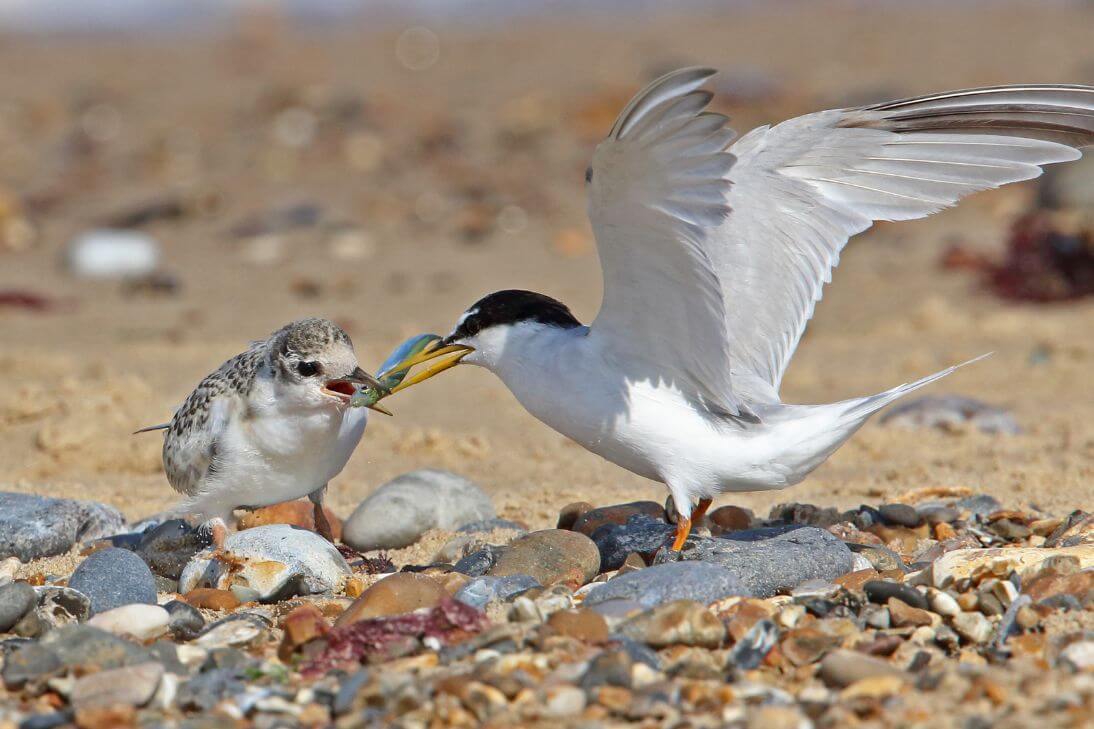Little Terns With A Big Problem
Little Terns With A Big Problem
6 January 2025
The Swansea Channel, a picturesque waterway connecting Lake Macquarie to the Pacific Ocean, is a haven for a variety of wildlife. Among the many creatures that call this area home, a particularly special and endangered bird graces its shores during the warmer months: the Little Tern.
These tiny seabirds, with their distinctive black cap and bright yellow bill, undertake an incredible migration each year from south east Asia to breed on Australian shores, including the crucial nesting site of Elizabeth Island in the Swansea Channel. However, these resilient birds face a multitude of threats, making their presence on our coast increasingly precarious. As Elizabeth Island is a popular boating destination for locals and holidaymakers, the biggest threat facing the Little Terns on Elizabeth Island is human disturbance.
Little Terns are listed under state legislation as endangered in New South Wales and Queensland. Under the Biodiversity Of Conservation Act 2016, the disturbance of endangered species or their nest can result in a fine of $330,000 and/or two years imprisonment. You can report any issues on 1800 271 100.
A Miniature Marvel
The Little Tern (Sternula albifrons) is aptly named. Measuring only 22-24 cm in length, it’s Australia’s smallest tern species. These dainty birds are easily identifiable by their pale grey upperparts, white underparts, and a characteristic black cap that extends down to their eyes. During the breeding season, their black bill transforms into a vibrant yellow, adding a splash of colour to their appearance.
Each year, these migratory birds embark on a long journey from their non-breeding grounds in Southeast Asia to breed along the Australian coastline. They arrive in spring, seeking out sandy beaches, islands, and estuaries to establish their nesting colonies. Elizabeth Island, with its sandy shores and relatively undisturbed environment, provides an ideal breeding habitat for these birds.
Protection of Little Terns Nesting
As part of the Swansea Channel dredging project, and in accordance with our environmental approval, the dredged sand is being placed on Elizabeth Island to create a desirable habitat for shorebirds. As part of our Shorebird Management Plan, we have been carrying out regular monitoring of the area and have identified endangered Little Terns nesting and recently hatched offspring. We have now installed exclusion fencing on the island to protect the Little Terns and their offspring. We ask you to please follow the directions of signage and make sure you and your dogs keep out of the fenced off exclusion areas to help us protect this endangered species. This fencing will be in place until after the breeding season in February. If you can avoid Elizabeth Island until after this time, please do.
Threats They’re Facing
Unfortunately, the very places that Little Terns choose for nesting are often the same areas frequented by humans for recreation. This overlap creates a range of threats that have contributed to the Little Tern being listed as an endangered species in New South Wales.
- Habitat Loss and Disturbance: Coastal development, erosion, and human activity have led to a significant loss of suitable nesting habitat for Little Terns. Even unintentional disturbance, such as people walking through nesting areas, can have devastating consequences. These birds nest directly on the sand, creating shallow scrapes for their eggs. These nests are incredibly well camouflaged, making them easy to miss. A single footstep can crush eggs or chicks, destroying an entire breeding attempt.
- Predation: Native predators like silver gulls, ravens, and raptors, as well as introduced predators such as foxes and cats, pose a significant threat to Little Tern eggs and chicks. With nests located on open ground, they are vulnerable to predation, particularly when disturbed and left unattended by their parents.
- Human Activities: Recreational activities on beaches and islands, such as boating, fishing, and off-leash dogs, can cause significant disturbance to nesting Little Terns. Boats landing on nesting sites can crush nests, while fishing lines and hooks can entangle birds. Off-leash dogs can disturb nesting birds, causing them to abandon their nests, leaving eggs and chicks vulnerable to predators and the elements.
- Environmental Changes: Rising sea levels and increased storm surges due to climate change also threaten Little Tern nesting sites. These events can inundate nests, destroying eggs and chicks, and eroding crucial nesting habitat.
What You Can Do To Help
The Little Terns that nest on Elizabeth Island are a vital part of the local ecosystem. Their presence adds to the rich biodiversity of the Swansea Channel and serves as an indicator of the health of our coastal environment. Protecting these endangered birds is a shared responsibility, and everyone can play a part in ensuring their survival.
- Respect Signage and Fencing: During the breeding season, areas where Little Terns are nesting are often fenced off and signposted. It is crucial to respect these boundaries and avoid entering these areas. This simple action can significantly reduce disturbance to nesting birds.
- Keep a Safe Distance: When observing Little Terns, maintain a safe distance and avoid making loud noises or sudden movements. This will prevent the birds from becoming stressed and abandoning their nests.
- Keep Dogs on Leashes: Dogs should always be kept on leashes in areas where Little Terns are nesting. Even well-behaved dogs can unintentionally disturb nesting birds or trample nests.
- Dispose of Rubbish Responsibly: Discarded rubbish, particularly fishing lines and hooks, can entangle and injure birds. Ensure all rubbish is disposed of properly in designated bins.
- Spread Awareness: Educate friends, family, and other members of the community about the importance of protecting Little Terns. By raising awareness, we can encourage more people to take action to help these endangered birds.
- Support Conservation Efforts: Support local conservation organisations like Hunter Wildlife Rescue and government initiatives that are working to protect Little Terns and their habitat. This can involve volunteering time, making donations, or participating in citizen science projects.
The future of the Little Terns on Elizabeth Island depends on our collective efforts. By understanding the threats they face and taking simple steps to minimise our impact, we can help ensure that these tiny birds continue to grace our shores for generations to come.

